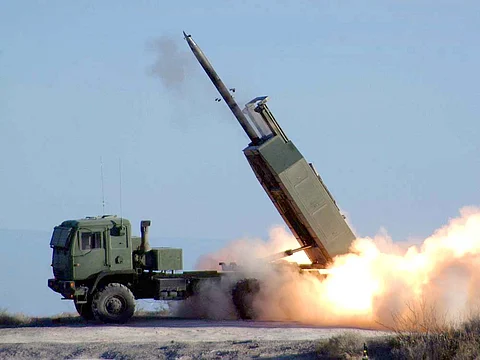

The Taiwanese military conducted live fire exercises on Monday, marking the first time it has test-fired the U.S.-supplied High Mobility Artillery Rocket System (HIMARS).
The HIMARS platform, which has gained global attention due to its use by Ukrainian forces in recent years, was delivered to Taiwan last year. The delivery of 11 systems was the first installment of a larger deal totaling 29 units, with the remainder expected to arrive by 2026.
U.S. military personnel, who have trained Taiwanese artillery teams in operating the systems, were present to oversee the drills.
With a range of approximately 300 kilometers (186 miles), HIMARS systems deployed on Taiwan’s main island can strike targets along the coast of China’s Fujian Province. If stationed on outlying territories under Taiwanese control—such as the Kinmen Islands, located just a few kilometers off the Chinese mainland—these systems could place a significant portion of southeastern China within range.
Despite officially recognizing the People's Republic of China (PRC) and maintaining a "One China" policy, the United States has never fully severed diplomatic, economic, or military ties with Taiwan, which formally identifies itself as the Republic of China.
Over the past three years, U.S. military assistance to Taiwan has increased notably. In 2024, Congress approved an $8 billion military aid package, alongside reports that U.S. special forces had been deployed to the Kinmen Islands for the first time.
Tensions in the Taiwan Strait have continued to rise since former U.S. Speaker of the House Nancy Pelosi’s visit to Taipei in August 2022—an event widely seen as a de facto rejection of the Nixon-era understanding of the “One China” policy.
In response, China has conducted numerous military exercises near the island, including a large-scale drill on April 1 simulating a naval blockade of Taiwan.
In April, a leaked memo from U.S. Secretary of Defense Pete Hegseth revealed that the Trump Administration had designated the potential confrontation with China as Washington’s top strategic priority. The memo outlined plans to shift significant U.S. military resources to the Asia-Pacific region in order to “confront” Beijing more directly.